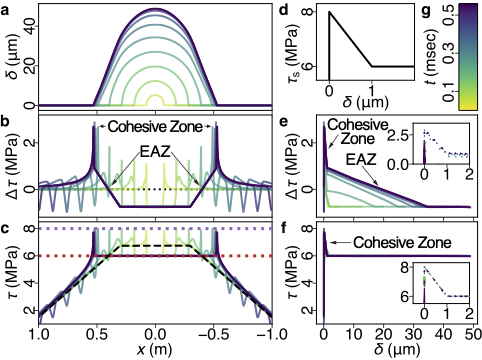Publication: The Earthquake Arrest Zone
Authors: Chun-Yu Ke, Gregory C. McLaskey, David S. Kammer
Earthquake ruptures are generally considered to be cracks that propagate as fracture or frictional slip on preexisting faults. Crack models have been used to describe the spatial distribution of fault offset and the associated static stress changes along a fault, and have implications for friction evolution and the underlying physics of rupture processes. However, field measurements that could help refine idealized crack models are rare. Here we describe large-scale laboratory earthquake experiments, where all rupture processes were contained within a 3-m long saw-cut granite fault, and we propose an analytical crack model that fits our measurements. Similar to natural earthquakes, laboratory measurements show coseismic slip that gradually tapers near the rupture tips. Measured stress changes show roughly constant stress drop in the center of the ruptured region, a maximum stress increase near the rupture tips, and a smooth transition in between, in a region we describe as the earthquake arrest zone. The proposed model generalizes the widely used elliptical crack model by adding gradually tapered slip at the ends of the rupture. Different from the cohesive zone described by fracture mechanics, we propose that the transition in stress changes and the corresponding linear taper observed in the earthquake arrest zone are the result of rupture termination conditions primarily controlled by the initial stress distribution. It is the heterogeneous initial stress distribution that controls the arrest of laboratory earthquakes, and the features of static stress changes. We also performed dynamic rupture simulations that confirm how arrest conditions can affect slip taper and static stress changes. If applicable to larger natural earthquakes, this distinction between an earthquake arrest zone (that depends on stress conditions) and a cohesive zone (that depends primarily on strength evolution) has important implications for how seismic observations of earthquake fracture energy should be interpreted.

Ke, C.-Y., McLaskey, G. C. & Kammer, D. S. (2021) The Earthquake Arrest Zone. Geophysical Journal International, 224(1), 581-589. doi: 10.1093/gji/ggaa386